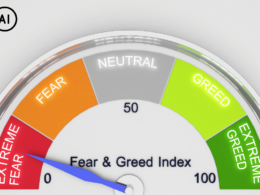Sales teams are moving from guesswork to guidance. Machine learning and modern AI are not just extra tools, they are shaping how prospects find you, how reps prepare for meetings, and how revenue leaders decide what to do next. The winning playbook in the next year looks simple on the surface. Shorter cycles, sharper targeting, clearer outcomes. Under the hood it runs on data discipline, creative that actually teaches, and models that stay inside the lines set by privacy rules. This guide breaks down seven trends you can use now, with practical examples, a comparison table, and a simple first month plan. In this article, we’ll explore the 7 ML (Machine Learning) and AI sales trends, and the hyper-personalization to autonomous agents.
Trend 1: Hyper Personalization That Respects Consent
Personalization is shifting from creepy to helpful. The difference is consent and clarity. Instead of stitching shadow profiles together, the best teams earn first party data with value exchange. Think preference centers that actually matter, onboarding questions that shorten time to value, and product analytics that reveal genuine interest rather than random clicks. Your outbound and lifecycle messages then speak to real problems with specifics that feel human. You will see higher reply rates and better calendar acceptance because your message reads like it was written for one person, not a list.
A quick starter move. Ask one question in the first email after a demo request and tag the lead based on the answer. Route each tag to a short sequence with a relevant case story and a single call to action. You are still working at scale, yet each person gets a path that fits.
Trend 2 ML AI Sales Trends: Predictive Scoring That Prioritizes Time, Not Just Names
Traditional lead scoring often promotes the wrong accounts because it rewards clicks and long form downloads equally. Predictive scoring uses patterns from past wins and losses to push the highest probability deals to the top. The best teams treat the score as a time allocation signal rather than a final verdict. Reps make faster decisions about who to call, marketers tune budgets toward segments that actually convert, and operations keeps the pipeline healthier.
Build trust by making the model explain itself in plain language. If the score rose because the buyer visited the pricing page after a product comparison, say so in the record. Reps will learn what matters and shape their next steps accordingly.
Trend 3: Creative Generation That Carries The Targeting Load
Micro targeting is fading as privacy rules tighten. That makes creative the workhorse again. AI helps by turning a shortlist of use cases into many variations that match context. One version for a five minute break on mobile, another for a desk review in the afternoon, and a final for a C level email that needs a clean table and a simple chart. The heavy lift is not the number of assets. It is choosing which three stories deserve the spotlight. The right stories are always specific and observable. Save my team an hour. Remove three steps from billing. Replace four tools with one.
Give your generator tight prompts and real screenshots. End every asset with a visible success moment a buyer can recognize. Conversion climbs when people can picture the win.
ML AI Sales Trends 4: Real Time Guidance For Live Conversations
Call intelligence has grown up. Live transcripts plus intent models can nudge reps toward better questions and cleaner closes while the meeting is still in motion. The good systems do not flood the screen with tips. They surface one helpful suggestion at a time. Ask about integration X. Clarify who owns approval. Confirm the timeline with a simple phrase. Leaders can then coach on patterns instead of hunches because they can see which prompts move deals forward and which do not.
Keep the tone respectful. The model is a co pilot, not a script. Train it on your best calls and give reps one button to dismiss irrelevant nudges so guidance gets better, not louder.
Trend 5: Forecasting That Admits Its Uncertainty
The most useful forecasts do not pretend to be perfect. They provide a range and explain what would shift the range up or down. Modern pipelines combine historical conversion rates, current stage velocity, rep capacity, and seasonality to produce a credible band you can run the business on. Revenue leaders use this range to set hiring, quota pacing, and program budgets without the drama that comes from single number forecasts that collapse at the end of the quarter.
Make the range visible on a single page. Add three levers that matter most this month and assign owners. You will see calmer decisions and fewer last minute scrambles.
6 – ML AI Sales Trends: Privacy First Measurement That Still Improves Results
Cookie walls are gone, device identifiers are limited, and buyers expect control. The answer is not more tracking tricks. The answer is clear consent flows, server side events with minimal fields, and cohort level reporting that respects the rules while keeping the feedback loop alive. You do not need to know every click to learn what works hyper-personalization to autonomous agents.
Track first conversation rate by campaign, opportunity creation by persona, and revenue by creative theme. Tie each to the date you changed something so you can see cause and effect.
Your marketing and sales teams will ship tests faster because legal and security will not need to unwind risky workarounds later.
7 – ML AI Sales Trends: Autonomous Agents For Repetitive Commercial Work
The newest wave is not a chatbot at the top of funnel. It is a set of small agents that handle narrow tasks inside guardrails. A pricing agent can assemble a quote from a template after a rep selects a few parameters. A follow up agent can draft a three sentence recap and a next step for approval. A data hygiene agent can resolve missing fields before an opportunity ages out of a stage. None of these replace a rep. They remove drag so humans stay with the buyer instead of wrestling with systems.
Start with one agent in a low risk area, instrument it, and make the approval model obvious. Aim for minutes saved per rep per day. The compounding effect is real hyper-personalization to autonomous agents.
| Trend | What It Changes | First Action To Take | Primary Metric To Watch |
|---|---|---|---|
| Hyper Personalization With Consent | Relevance in outbound and lifecycle programs | Add a one question preference capture after demo requests and route paths | Reply Rate And Calendar Acceptance |
| Predictive Scoring For Time Allocation | Pipeline focus and weekly planning | Publish score explanations in plain language inside CRM records | Opportunity Creation From Top Quartile Leads |
| Creative That Teaches A Use Case | Ad efficiency and sales enablement | Produce three short stories that show an observable win with screenshots | Click To Meeting And Save Rate |
| Real Time Conversation Guidance | Call quality and coaching | Train nudges on five top performing calls and enable a one tap dismiss | Next Step Set During Call |
| Range Based Forecasting | Planning stability and trust | Display a forecast band with three controllable levers and owners | Forecast Error And Slip Rate |
| Privacy First Measurement | Speed of testing and compliance comfort | Switch to server side events with a short allowed field list | Qualified Meetings By Campaign Cohort |
| Narrow Autonomous Agents | Rep capacity and data quality | Launch one agent for quote assembly with human approval | Minutes Saved Per Rep Per Day |
A One Month Plan To Put These Trends To Work
Week one of ML AI Sales Trends. Align leadership on the privacy and consent posture. Turn on a single preference capture in your forms and update your policy page in plain language. Pick one use case that your product solves in under ten minutes and script a short story with screenshots.
Week two. Train a basic predictive model on the last year of wins and losses, limited to five fields you trust. Publish scores with explanations. Record five strong calls and mark the exact moments that matter. Draft two live suggestions you would have wanted in those moments.
Week three. Replace a micro targeted ad set with three creative variations of the short story you wrote. Send server side events that capture only campaign, creative theme, and conversion event. Build a one page forecast view with a range and three levers. Assign owners.
Week four. Launch a simple quote assembly agent with a visible approval step. Measure minutes saved and error reduction. Share results at the all hands with a short note on what you will add next month and what you will retire because the new system made it unnecessary.
Common Mistakes And The Better Move
Do not collect every data field just because you can. Collect the smallest set that moves a buyer forward. Do not pretend a score is a decision. Treat it as a time guide for humans. Do not chase every trend at once with ML AI Sales Trends. Pick two and ship them well. Do not let creative stay abstract. Always show the app or the service delivering a visible win. Do not hide privacy choices. Put them where people already are. Trust follows visibility.
Hyper-Personalization to Autonomous Agents Final Thoughts
Sales performance is becoming less about heroic effort and more about systems that make good decisions easier and faster. Machine learning and AI are most valuable when they free people to do the parts of selling that only humans can do. Listening well. Framing problems clearly. Building trust. Use these trends to remove friction, respect your buyers, and give your team hours back every week. That is where growth comes from.








